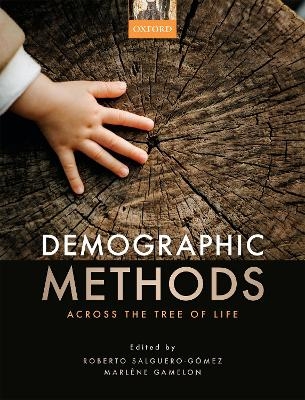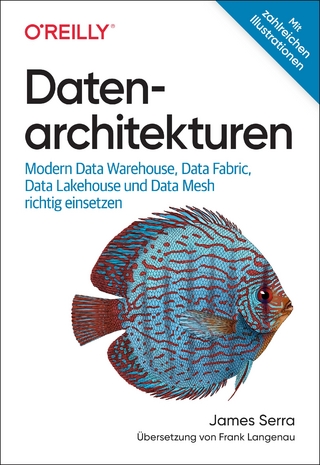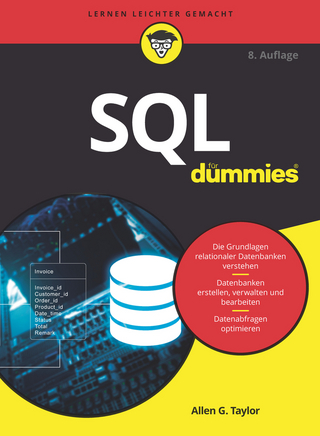
Demographic Methods across the Tree of Life
Oxford University Press (Verlag)
978-0-19-883861-6 (ISBN)
Demography is everywhere in our lives: from birth to death. Indeed, the universal currencies of survival, development, reproduction, and recruitment shape the performance of all species, from microbes to humans. The number of techniques for demographic data acquisition and analyses across the entire tree of life (microbes, fungi, plants, and animals) has drastically increased in recent decades. These developments have been partially facilitated by the advent of technologies such as GIS and drones, as well as analytical methods including Bayesian statistics and high-throughput molecular analyses. However, despite the universality of demography and the significant research potential that could emerge from unifying: (i) questions across taxa, (ii) data collection protocols, and (iii) analytical tools, demographic methods to date have remained taxonomically siloed and methodologically disintegrated. This is the first book to attempt a truly unified approach to demography and population ecology in order to address a wide range of questions in ecology, evolution, and conservation biology across the entire spectrum of life.
This novel book provides the reader with the fundamentals of data collection, model construction, analyses, and interpretation across a wide repertoire of demographic techniques and protocols. It introduces the novice demographer to a broad range of demographic methods, including abundance-based models, life tables, matrix population models, integral projection models, integrated population models, individual based models, and more. Through the careful integration of data collection methods, analytical approaches, and applications, clearly guided throughout with fully reproducible R scripts, the book provides an up-to-date and authoritative overview of the most popular and effective demographic tools.
Demographic Methods across the Tree of Life is aimed at graduate students and professional researchers in the fields of demography, ecology, animal behaviour, genetics, evolutionary biology, mathematical biology, and wildlife management.
Roberto Salguero-Gómez is Associate Professor in Ecology at the Department of Zoology and a Tutorial Fellow at Pembroke College at the University of Oxford, UK. He also holds research affiliations at the University of Sheffield, UK, the University of Queensland, Australia, and the Max Planck Institute for Demographic Research, Germany. He studies population responses to climate change, the evolution of senescence, and drivers of variation in life history trait variation across plants and animals. He has authored over 80 peer-reviewed papers, including articles in Nature, PNAS, Nature Ecology and Evolution and Ecology Letters. He serves as Associate Editor at Ecology Letters, Journal of Ecology, Journal of Animal Ecology, and Theoretical Population Biology. He has also edited 10 special features and published the book "The Evolution of Senescence in the Tree of Life" (2017). Marlène Gamelon is a Researcher at the Centre National de la Recherche Scientifique (CNRS) in Lyon, France. She is also researcher at the Centre for Biodiversity Dynamics (CBD) at the University of Science and Technology (NTNU) in Trondheim, Norway. She is interested in understanding how free-ranging animal populations respond to environmental changes, including abiotic (climate conditions), anthropogenic (harvest), and biotic (intra- and interspecific interactions) factors. Her work mainly relies on individual long-term monitoring of birds and mammals. She has authored peer-reviewed papers, including articles in Trends in Ecology and Evolution, Ecology Letters, Evolution, Journal of Animal Ecology and the American Naturalist.
Tim Coulson: Foreword
Roberto Salguero-Gómez and Marlène Gamelon: Introduction: From Lions, to Lion's Manes, and Dandelions: Why Using (which types of) Demographic Data and Methods
Part I: Demographic Data Collection: From Genes to Environment
1: Emily G. Simmonds, Henrik Jensen, Alina Niskanen and Steven Smith: Genetic Data Collection, Pedigrees and Phylogenies
2: Oldrich Tomasek, Alan A. Cohen, Erola Fenollosa, Maurizio Mencuccini, Sergi Munné-Bosch and Fanie Pelletier: Biochemical and Physiological Data Collection
3: Marie J.E. Charpentier, Marie Pelé, Julien P. Renoult and Cédric Sueur: Social Data Collection and Analyses
4: Margaret E. K. Evans, Bryan A. Black, Donald A. Falk, Courtney L. Giebink and Emily L. Schultz: Growth Rings across the Tree of Life: Demographic Insights from Biogenic Time Series Data
5: Marlène Gamelon, Josh A. Firth, Mathilde Le Moullec, William K. Petry and Roberto Salguero-Gómez: Longitudinal Demographic Data Collection
6: Pedro F. Quintana-Ascencio, Eric S. Menges, Geoffrey S. Cook, Johan Ehrlén and Michelle E. Afkhami: Drivers of Demography: Past Challenges and a Promise for a Changed Future
Part II: Data and Research Question-Driven Methods
7: Jonas Knape and Andreas Lindén: Abundance Based Approaches
8: Owen R. Jones: Life Tables: Construction and Interpretation
9: Yngvild Vindenesa, Christie Le Coeura and Hal Caswell: Introduction to Matrix Population Models
10: Edgar J. González, Dylan Z. Childs, Pedro F. Quintana-Ascencio and Roberto Salguero-Gómez: Integral Projection Models
11: David N. Koons, David T. Iles and Iain Stott: Transient Analyses of Population Dynamics Using Matrix Projection Models
12: Viktoriia Radchuk, Stephanie Kramer-Schadt, Uta Berger, Cédric Scherer, Pia Backmann and Volker Grimm: Individual-Based Models
13: Sarah Cubaynes, Simon Galas, Myriam Richaud, Ana Sanz Aguilar, Roger Pradel, Giacomo Tavecchia, Fernando Colchero, Sebastien Roques, Richard Shefferson and Carlo Giovanni Camarda: Survival Analyses
14: Marlène Gamelon, Stefan J.G. Vriend, Marcel E. Visser, Caspar A. Hallmann, Suzanne T.E. Lommen and Eelke Jongejans: Efficient use of demographic Data: Integrated Population Models
Part III: Applications
15: Guillaume Péron: Spatial Demography
16: Shripad Tuljapurkar and Wenyun Zuo: Evolutionary Demography
17: Bernt-Erik Sæther and Steinar Engen: Reproductive value and analyses of population dynamics of age-structured populations
18: Jean-Michel Gaillard, Victor Ronget, Jean-François Lemaître, Christophe Bonenfant, Guillaume Péron, Pol Capdevila, M.arlène Gamelon and Roberto Salguero-Gómez: Applying Comparative Methods to Different Databases: Lessons from Demographic Analyses Across Mammal Species
19: James D. Nichols: Adaptive Management: Making Recurrent Decisions in the Face of Uncertainty
20: Anna Kuparinen: Heritability, Polymorphism and Population Dynamics: Individual-Based Eco-Evolutionary Simulations
21: Maria Paniw, Gabriele Cozzi, Stefan Sommer and Arpat Ozgul: Demographic Processes in Socially Structured Populations
22: Petra Klepac and C. Jessica E. Metcalf: Demographic Methods in Epidemiology
| Erscheinungsdatum | 05.10.2021 |
|---|---|
| Zusatzinfo | 86 colour line figures and illustrations |
| Verlagsort | Oxford |
| Sprache | englisch |
| Maße | 190 x 246 mm |
| Gewicht | 854 g |
| Themenwelt | Mathematik / Informatik ► Informatik ► Datenbanken |
| Naturwissenschaften ► Biologie ► Ökologie / Naturschutz | |
| ISBN-10 | 0-19-883861-1 / 0198838611 |
| ISBN-13 | 978-0-19-883861-6 / 9780198838616 |
| Zustand | Neuware |
| Informationen gemäß Produktsicherheitsverordnung (GPSR) | |
| Haben Sie eine Frage zum Produkt? |
aus dem Bereich


